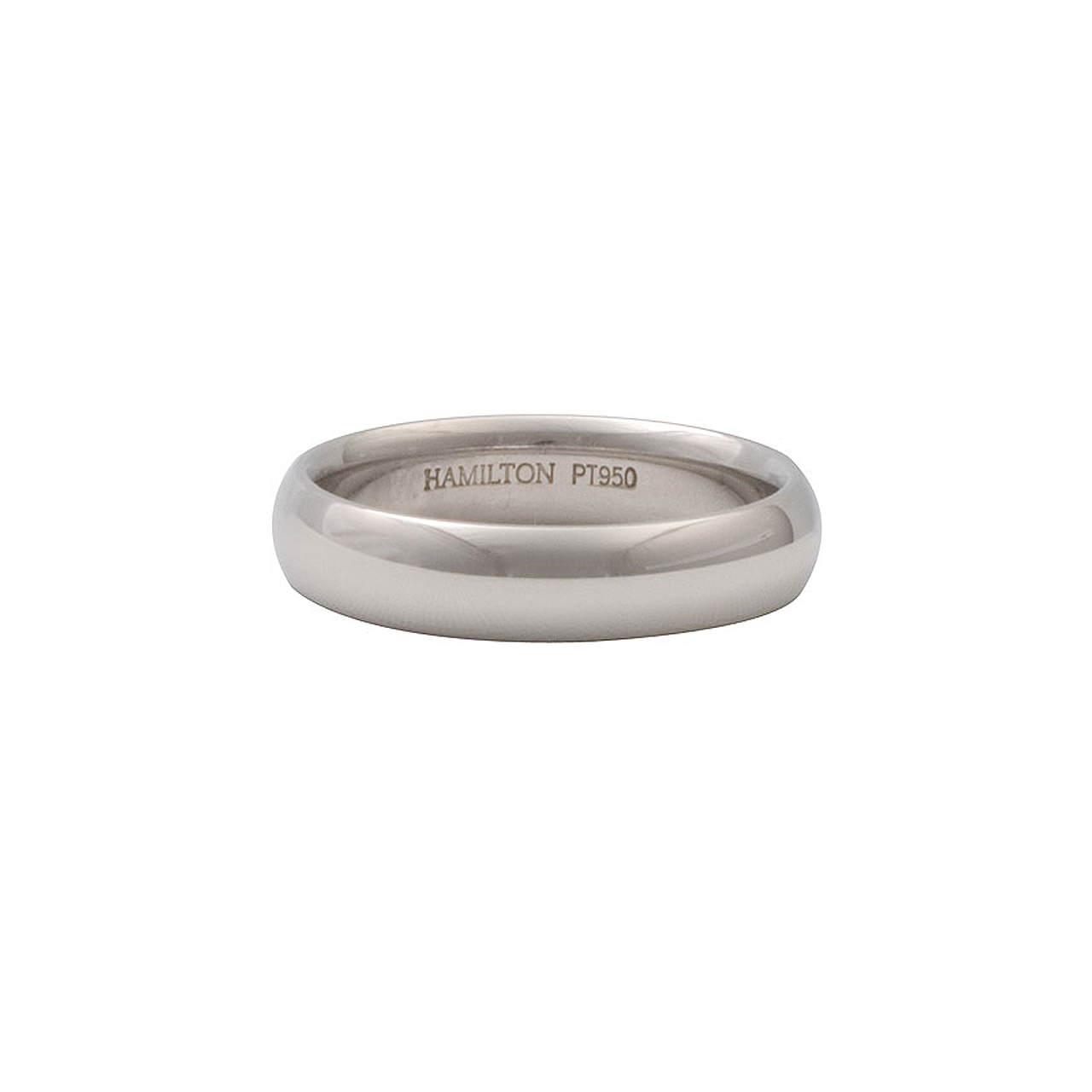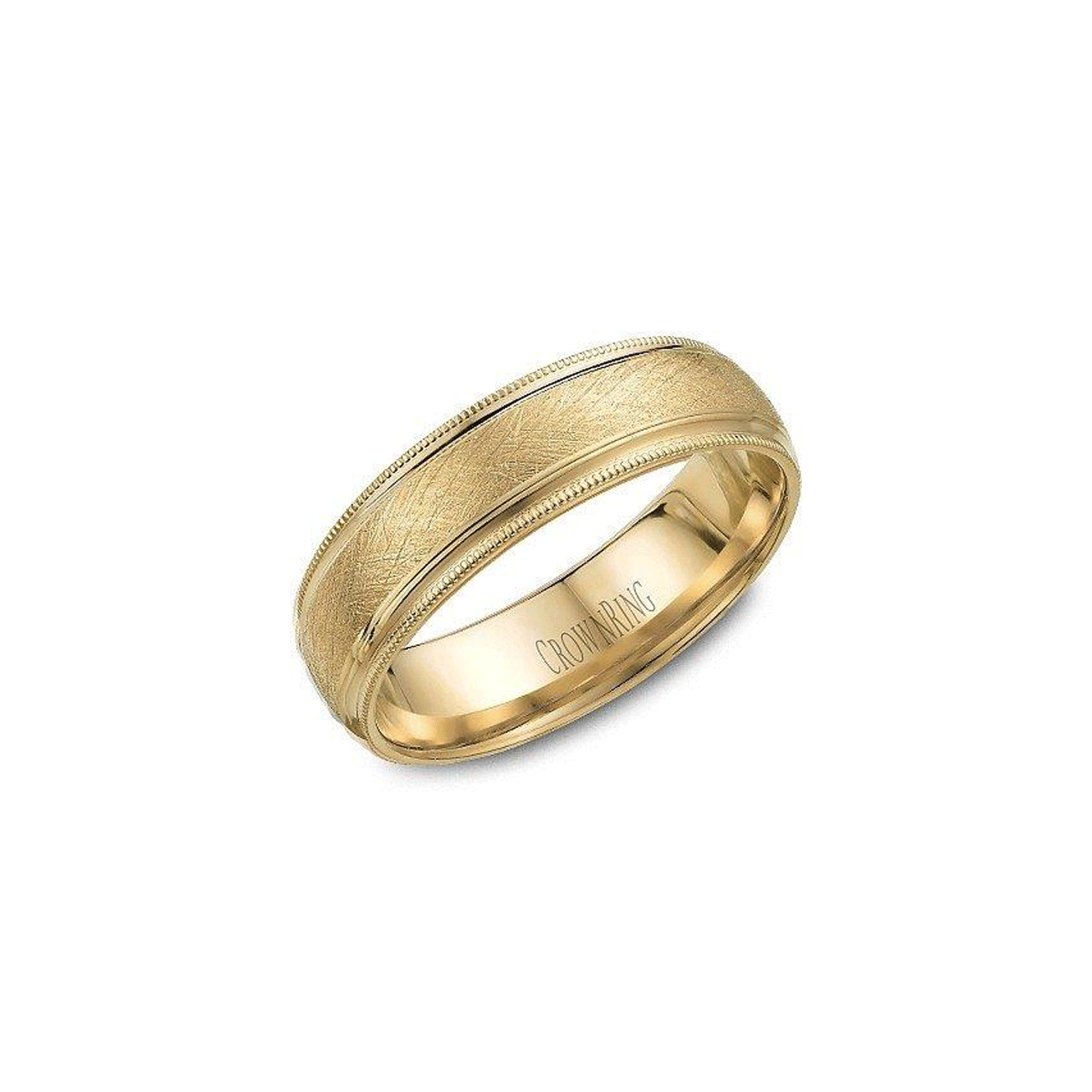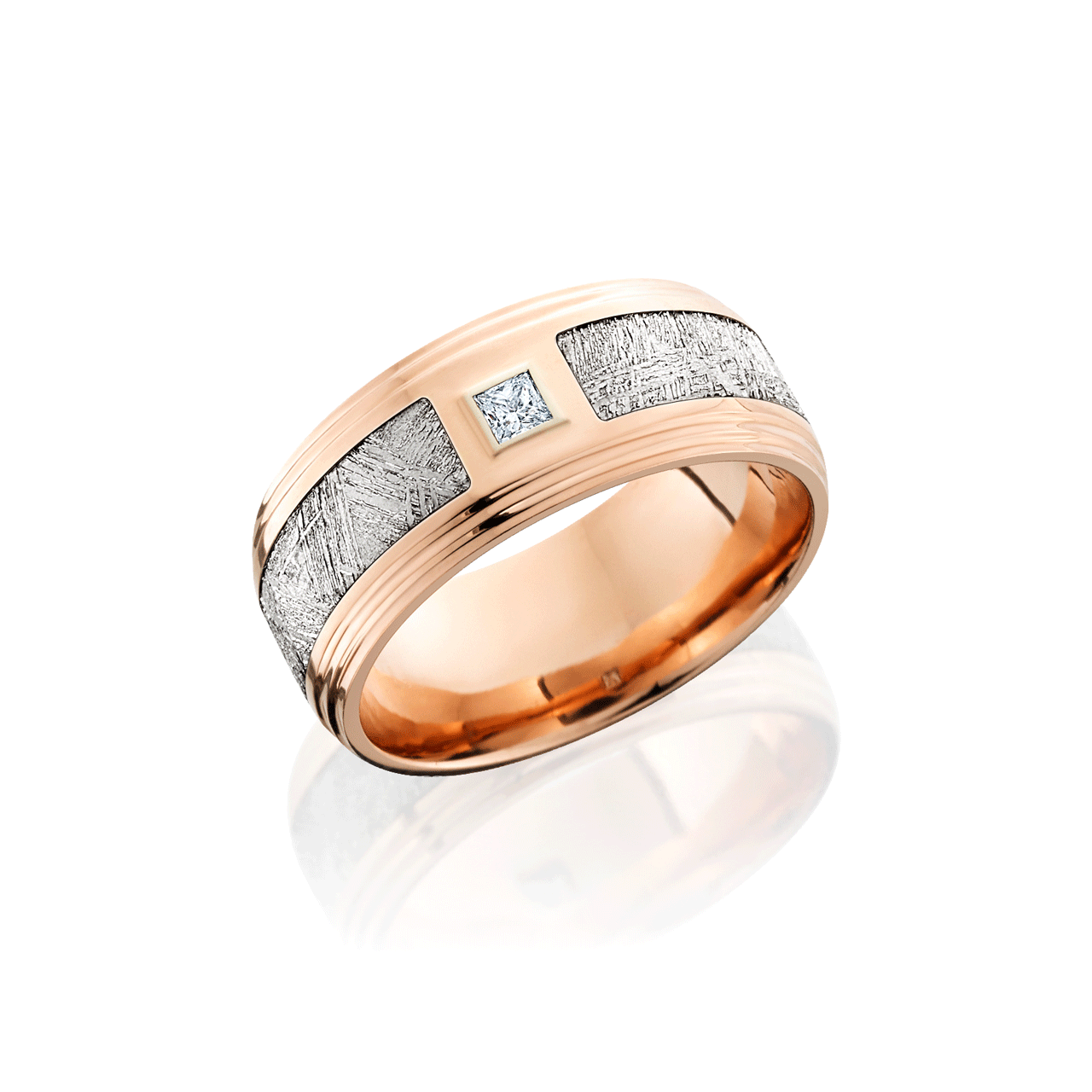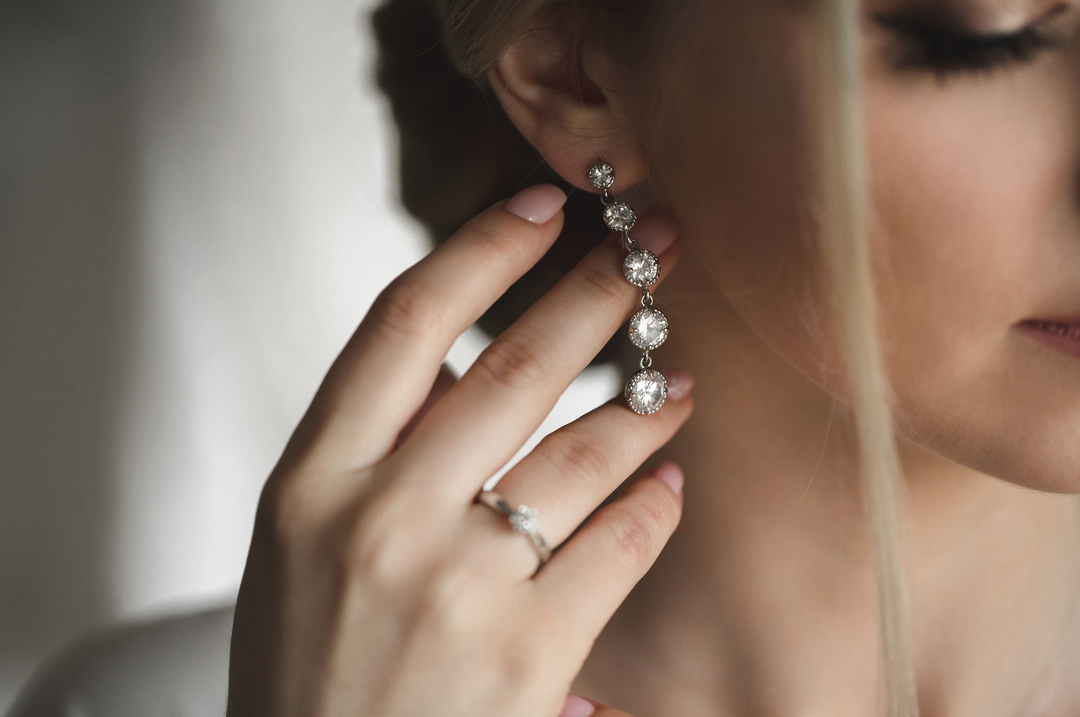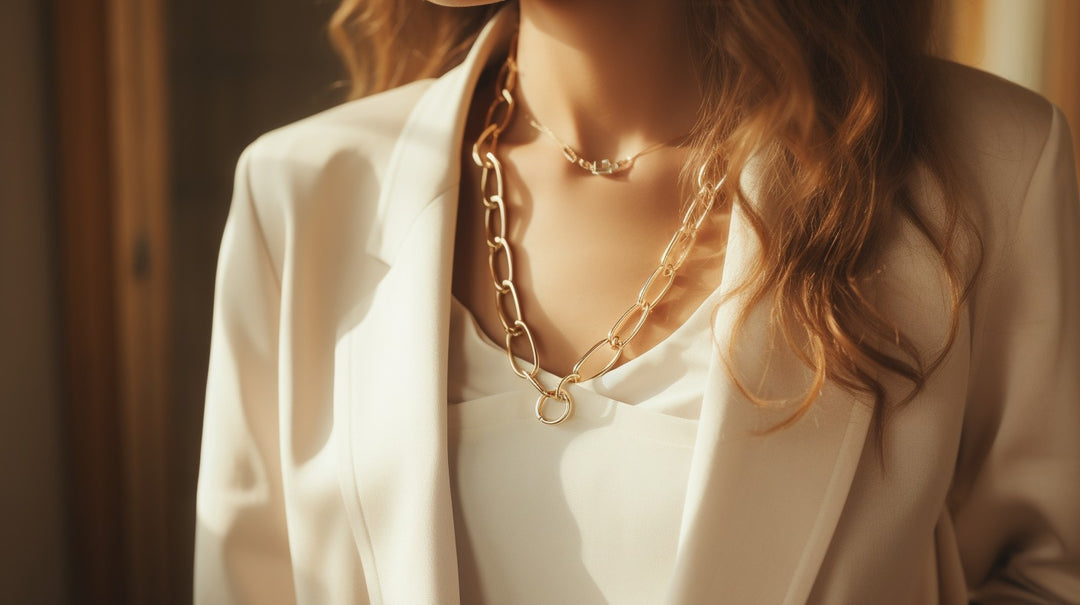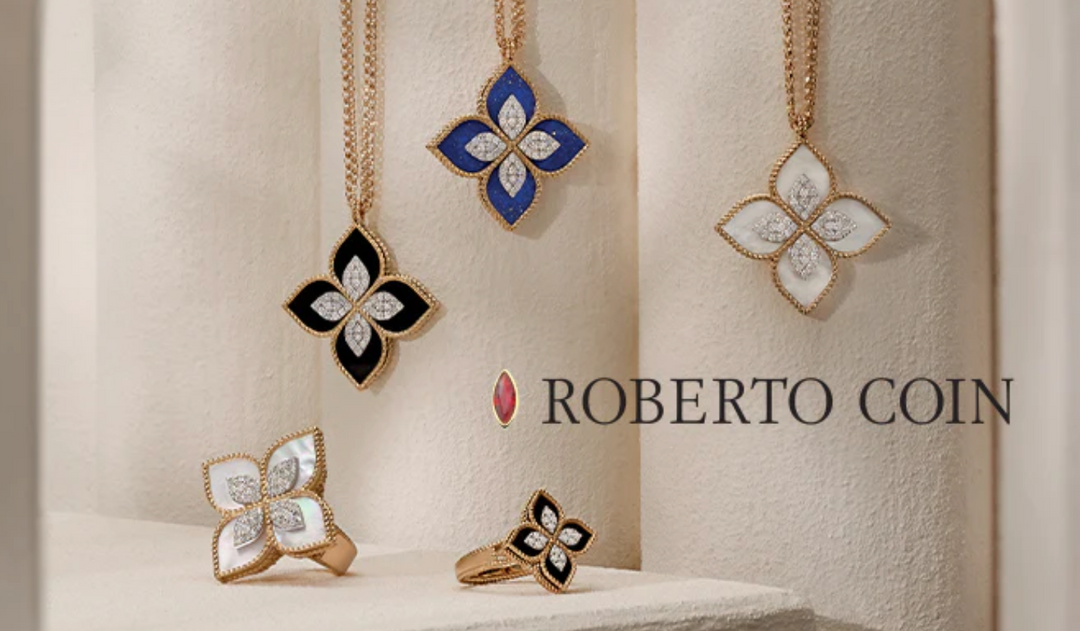The Anatomy of a Wedding Band:
Styles for Men & Women. Metals, Stones & More
Saying “I do?” Although
engagement rings steal most of the spotlight, a
wedding band should be equally as precious, since it is the official symbol of your married status. This is the piece you wear, not just to proclaim your love for someone, but your life-long commitment to that person. As something you will wear everyday, it should fit you. Unsure of where to begin in your search? Learn about the anatomy of a wedding band, its different styles, genders, and adornments to help you find that perfect, eternal ring.
Differences In Men & Women’s Wedding Bands
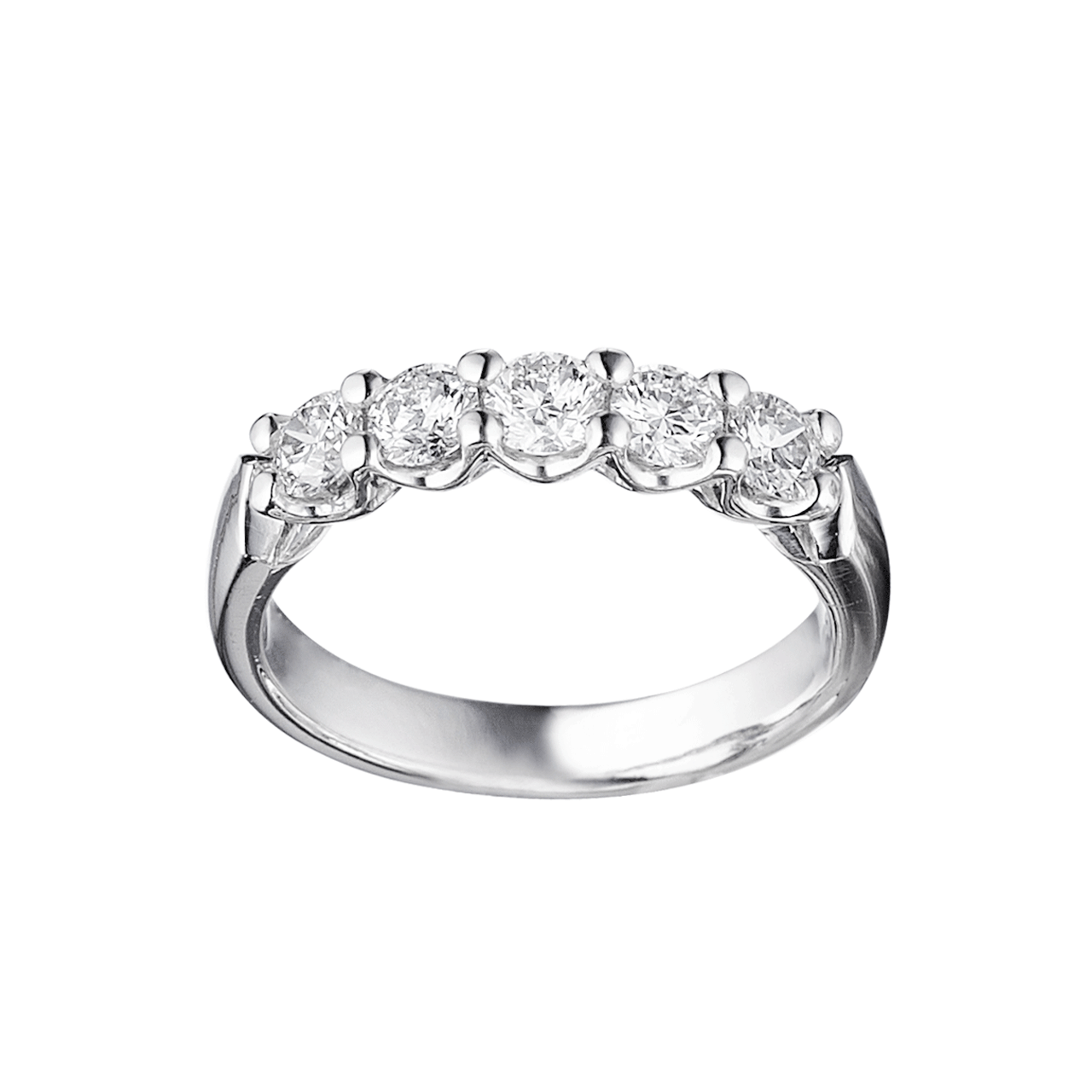
Men’s Wedding Bands
Typically, men have larger fingers, meaning that the band diameter and width will be thicker. Depending on a man’s personal style, the rings can range from a simple gold band to a much heavier and elaborate band. Those who lean towards the latter usually choose a more substantial ring because it is the only ornamentation on their hand. A conversation wedding band can have precious or semi-precious stones, mixed metals, or even unusual materials such as wood or meteorite. That being said, while many men have precious stones on their rings, they will usually be in a smooth setting that is unlikely to catch on clothing or inhibit the use of the hands in activities like sports or manual labor.
Women’s Wedding Bands
It used to be that wedding bands for woman had to be simple so as not to compete with the engagement ring. Things are changing, however, and its not unheard of for a woman’s wedding band to be just as show stopping as the given to her on bended knee. However, the style is still a band, meaning that while it can have diamonds or other stones, it should have a relatively smooth surface. In other words, pavé is the undisputed way to go. When it comes to width, it depends on the finger a woman choses to wear it on. If she is traditional, wearing it on the same finger as her engagement ring, the band should be thinner, more delicate in design so that it compliments the engagement ring without competing for real estate. If she takes a modern approach like many women of today, she might opt to wear her wedding band on the other ring ringer. If this is the case, then she has much more free-reign in ring design, such as making the width substantial or the design more intricate.
Diamond wedding bands are becoming much the much more popular choice over the traditional simple gold band. While most will sport diamond pavé so as not to take away from the engagement stone, there are several options that can still make a statement.
Classic Diamond Bands can usually compliment any engagement ring, fitting lovely beneath the larger stone on the left ring finger.
Eternity Diamond Bands are designed with brilliant diamonds around the entirety of the band to be as unending and as enduring as your love. Eternity bands have the benefit of being impressive while remaining simple in design.
Statement Diamond Bands are for the modern individual who wants their wedding band to make a statement all its own. These are usually worn on the opposite hand so both the engagement rings and wedding band have their own center stage.
Fashion Diamond Bands are not to be mistaken as “costume.” Fashion bands are designed with an extra
je ne sais quoi that gives them a trendy flair, such as tiered diamonds or even a hint of color.
Anniversary Diamond Bands are ideal for couples who are already married and are looking to update their rings. Perhaps the wedding band took the back seat while other expenses took precedence when you were just starting out your new life together? Or maybe you are renewing your vows and want a new piece to mark the occasion? Either way, the anniversary band is the way to go.
Gemstone Bands are a wonderful way to personalize a wedding band. Many choose to include their birthstone to add a pop of color and make the ring feel more personal, as opposed to the traditional all white diamond.
Metals
Platinum
This metal is the finest of all jewelry metals. Its naturally white color is ideal for showcasing the brilliance of diamonds. Far more rare and stronger than gold, platinum rings are heirloom pieces with the durability to securely hold precious stones in their settings for decades.
Quick Tip: Platinum is ideal for those with sensitive skin, as it is naturally hypoallergenic.
Gold
Gold is the first precious metal most people think of when shopping for a ring, and indeed is the most common and versatile choice—but not all gold is made equal. In fact it is extremely rare to find a jewelry piece made of pure gold. Its versatility is also its Achilles Heel: the metal is very soft and can warp its shape or compromise the setting of a diamond or other precious stone. This is why it is often mixed with other alloys to strengthen it or even alter its color (yellow, white, or rose).
The measurement of “karats” determines the amount of pure gold in a piece of jewelry. There are 24 parts in this measurement, with 24 being entirely pure gold. 18K (karats) is the most common, being made out of 75% gold.
Yellow Gold
Although it took the back seat for a couple of years, the classic allure of yellow gold is here to stay. This is gold’s natural color and will likely have the highest karat measurement the compared to other gold variation made by the inclusion of alloys.
Ideal for those with warm undertones, yellow gold has radiance to it that marks that lends the wearer its classic beauty.
Rose Gold
Feminine with its pink hue, or masculine with its fiery orange, rose gold has definitely been in vogue recently. Its iconic hue is achieved by mixing natural yellow gold with a copper alloy. This metal is ideal for a person of romance and fairytale femininity.
White Gold
A less expensive alternative to platinum, this silvery-white precious metal has certainly taken center stage in recent years. Like platinum, white gold compliments the clear brilliance and sparkle of diamonds, making it a common choice for engagement rings. This contemporary metal achieves is moonlit color by combining yellow gold with copper, zinc and palladium; it is then plated with rhodium, a metal belonging to the platinum family, like a coat of armor to prevent scratches. Keep in mind, however, that white gold does not hold its luminous color forever. It will be necessary after only a few years to have it re-plated.
Now that you have learned about the anatomy of a wedding band. You should be able to shop with confidence. Feel free to browse Hamilton’s finely curated collection of wedding bands online.











